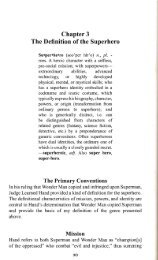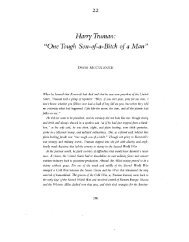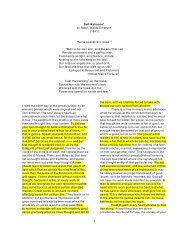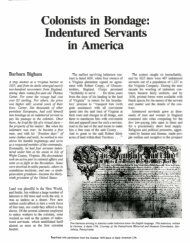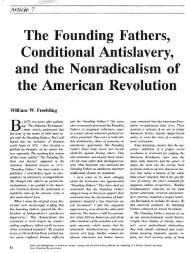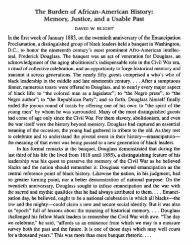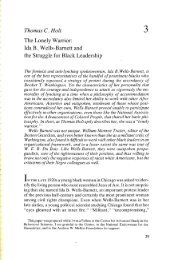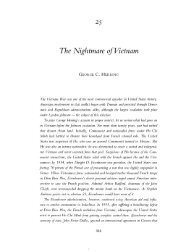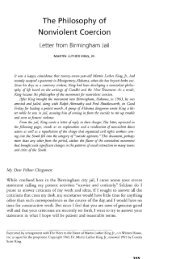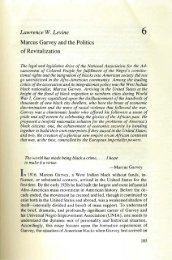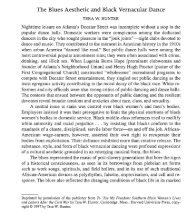Mary - Journeytohistory
Mary - Journeytohistory
Mary - Journeytohistory
Create successful ePaper yourself
Turn your PDF publications into a flip-book with our unique Google optimized e-Paper software.
258 From Slavery to Freedomorganization called the Colored Primitive Baptists in America. In 1869 theGeneral Assembly of the Cumberland Presbyterian church organized its blackmembers in the Colored Cumberland Presbyterian church. One of the mostimportant separate churches emerged in the Colored Methodist Episcopalchurch. By 1870, when blacks had organized five conferences, the first generalconference was held, and white bishops came to consecrate W. H. Miles andR. II. Vanderhorst as the first black bishops, to be followed three years later byL. H. Holsey, J. A. Beebe, and Isaac Lane.Older black churches entered a new stage of growth. The African MethodistEpiscopal church, which had only 20,000 members in 1856, boasted 75,000ten years later. In 1876 its membership exceeded 200,000, and its influenceand material possessions had increased proportionally. The Baptists likewiseenjoyed phenomenal growth. Local churches sprang up overnight under theministry of unlettered but inspired preachers. In 1866 the black Baptists ofNorth Carolina organized the first state convention. Within a few years everySouthern state had a large black Baptist organization. Total membership increasedfrom 150,000 in 1850 to 500,000 in 1870. As the first social institutionsfully controlled by blacks in America, these churches gave blacks anopportunity to develop leadership, and it is no coincidence that many outstandingReconstruction leaders were ministers. Bishop H. M. Turner of Georgia,the Reverend R. H. Cain of South Carolina, and Bishop J. W. Hood of NorthCarolina were a few of the political leaders who gained much of their experiencein the black church.ECONOMIC ADJUSTMENTIt was one thing to provide temporary relief for former slaves and another togUide them along the road to economic stability and independence. The releasefrom bondage of 4 million persons had serious implications for the economicstructure of the South at a time when it could least afford to be disturbed. Tobe sure, many ex-slaves would not work, at first, because they were exhilaratedby their new liberty, and still others scorned low wages and lacked confidencein their employers. But many were active, and all were potential competitors inthe labor market. To white workers the situation was extremely disturbing.White planters, however, in an effort to reestablish themselves, were anxious tosecure labor at the lowest possible price, and if in their own minds they concededthe right of blacks to be free, they were seldom able to realize that blacksalso had a right to refuse work. Many prospective employers therefore soughtto force blacks to work. The Black Codes were in many instances formulatedwith this specific end in view.The Black Codes represented the effort of the South to solve problems createdby the presence of former slaves, as the Freedmen's Bureau representedthe efforts of the federal government to achieve the same end. Establishment ofthe Freedmen's Bureau and of Radical Reconstruction governments did not



